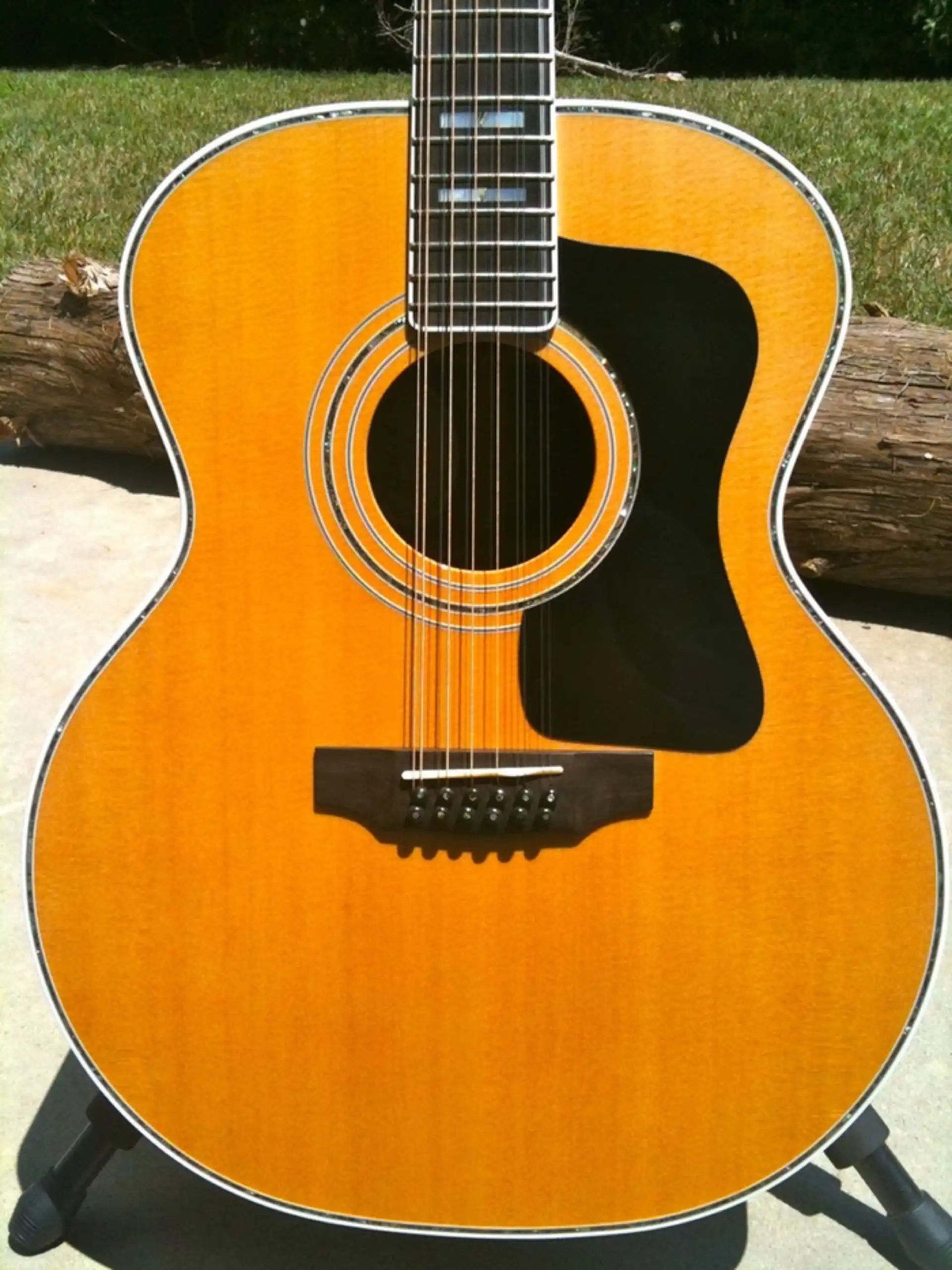
By the winter of 2009, my venerable 1976 Guild F-512 12 string was in desperate need of attention. It badly needed a neck reset and the back of the neck was worn through to bare wood in places. The finish on the soundboard was a mess, a combination of hauling it in and out of a variety of climates for decades, and simple neglect. In places it was gooey from sweat and had chipped, crazed, cracked or worn off sufficiently to, in my opinion, require a refinish. I determined the options before me were:
For reasons still unknown (I told myself I was “too busy”), I chose to be inventive and selected a (disastrous) variation of options 2 and 4. Instead of doing the work myself, I contacted a local guitar repair shop. The proprietor had worked for a well-respected local luthier and repairman, someone who had worked on my guitars years earlier, and who had indicated to me he was trying to get away from the business for health reasons. I conveyed my desire(s) regarding my 12 string to this former colleague of his who informed me he was quite familiar with Guild guitars. So I authorized an effort to correct finish issues as well as set up the guitar.
One year later...
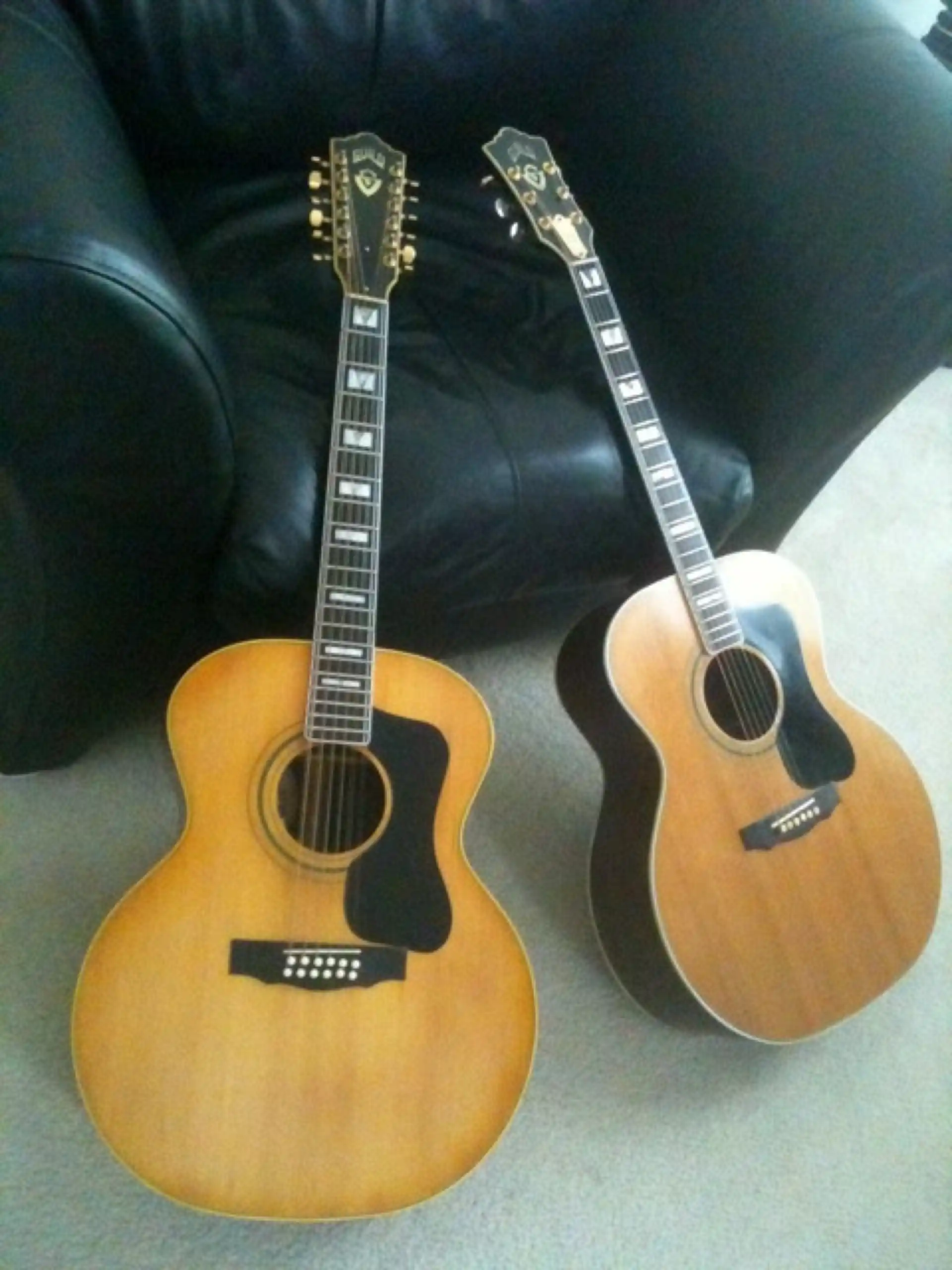
Ruined!
Several phone calls over several months eventually led to the delivery of my guitar. The fingerboard had been reduced to nearly half of its original thickness. The entire guitar was now spray tinted an horrific mustard yellow. Apparently, in an attempt to deal with the "sticky" lacquer issues, they had hand sanded various portions of the guitar and, but for the soundboard, made no attempt to conceal. The most affected was the soundboard, which had quite obviously been sanded using fingertips instead of a sanding block. You could see the high and low spots, indicating the varying thickness of Spruce.
Without going into details, after heavy consideration and consultation it was determined there was little to no recourse option available to me. The entire scenario was screaming Caveat Emptor and I was stuck with an instrument that was in worse condition than when I started. My options, this time:
Of course I had to make it right, as I was unwilling to live with this guitar in such condition. The soundboard had been destroyed from hand sanding (it was paper-thin in places). The mustard yellow tinting was definitely ‘creative’, at best, the only reasonable explanation for which would be the presence of consciousness-altering chemicals during the artistic portion of the endeavor.
Well, overhaul it was. Since that meant adding a new soundboard, I would take the opportunity to add Paua inlay, clean up the inside of the box, do a proper neck reset, add a new fingerboard, add a new bridge, and completely re-bind the guitar - this Guild was getting the works!
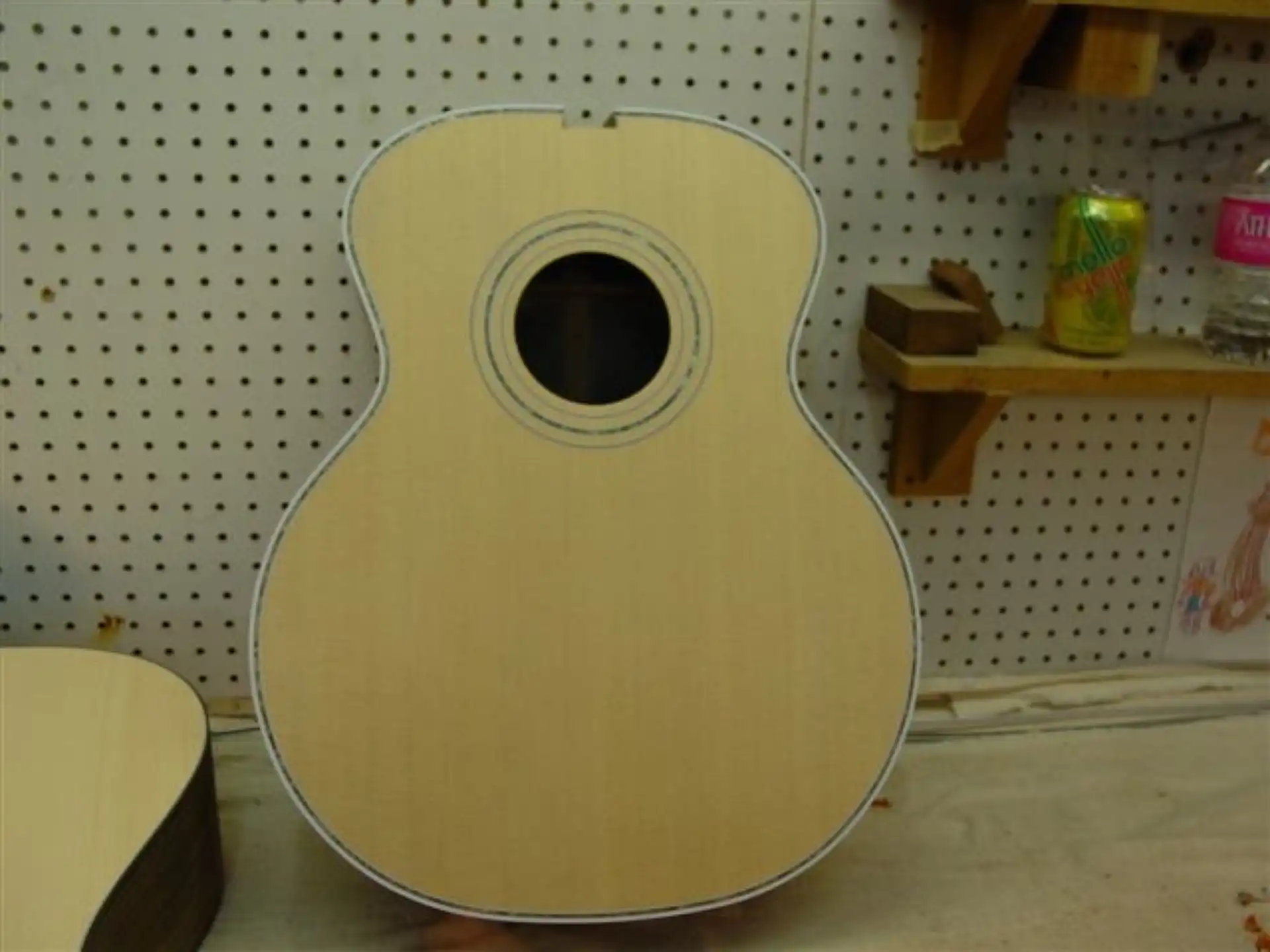
The New Soundboard
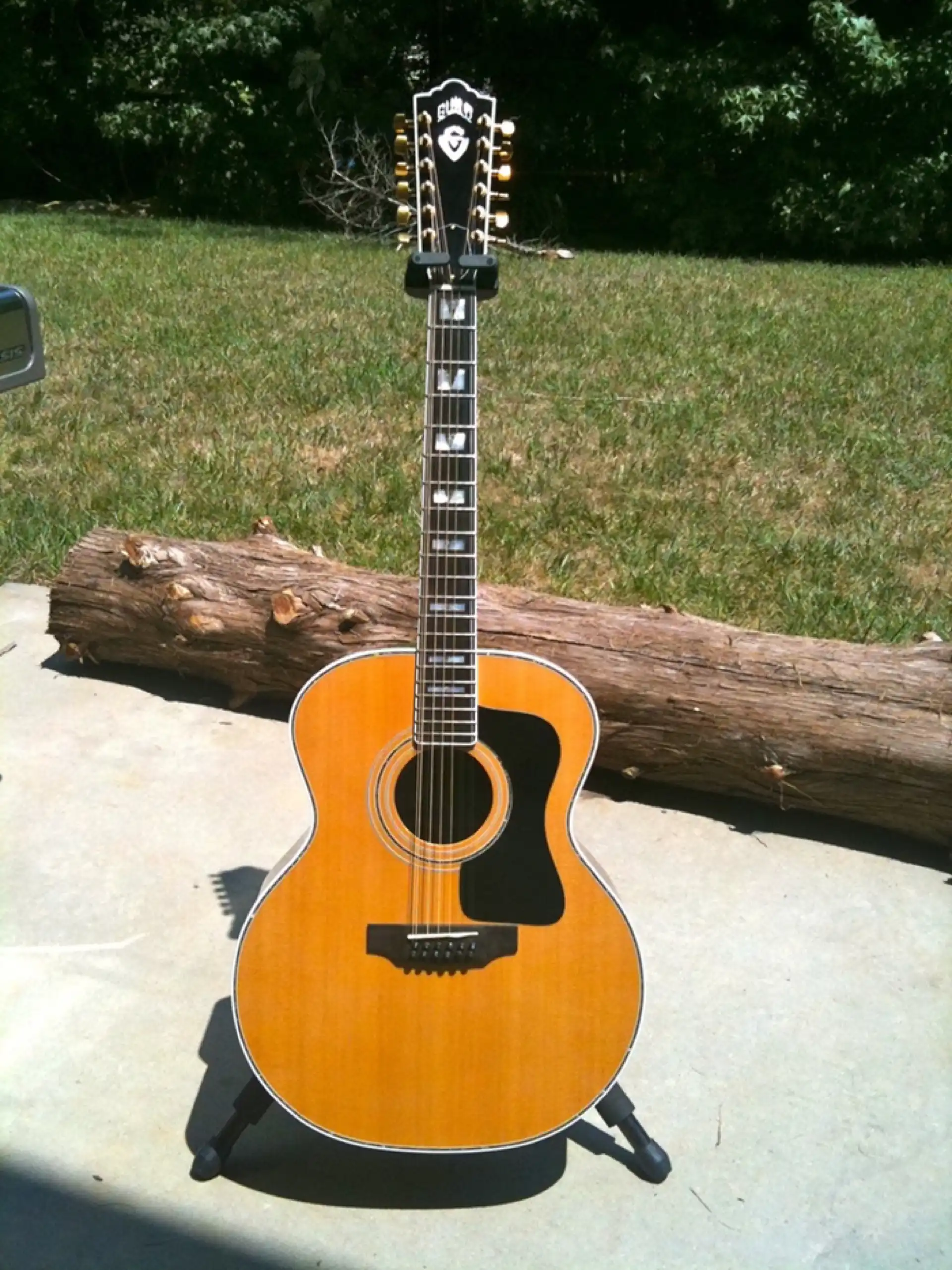
My Rejuvenated F-512
The 12 string turned out great, even better than new!

F-512 Front View
By paying a little extra attention to the Rosewood back and sides, the beauty of the wood was perfectly captured under the new lacquer finish.
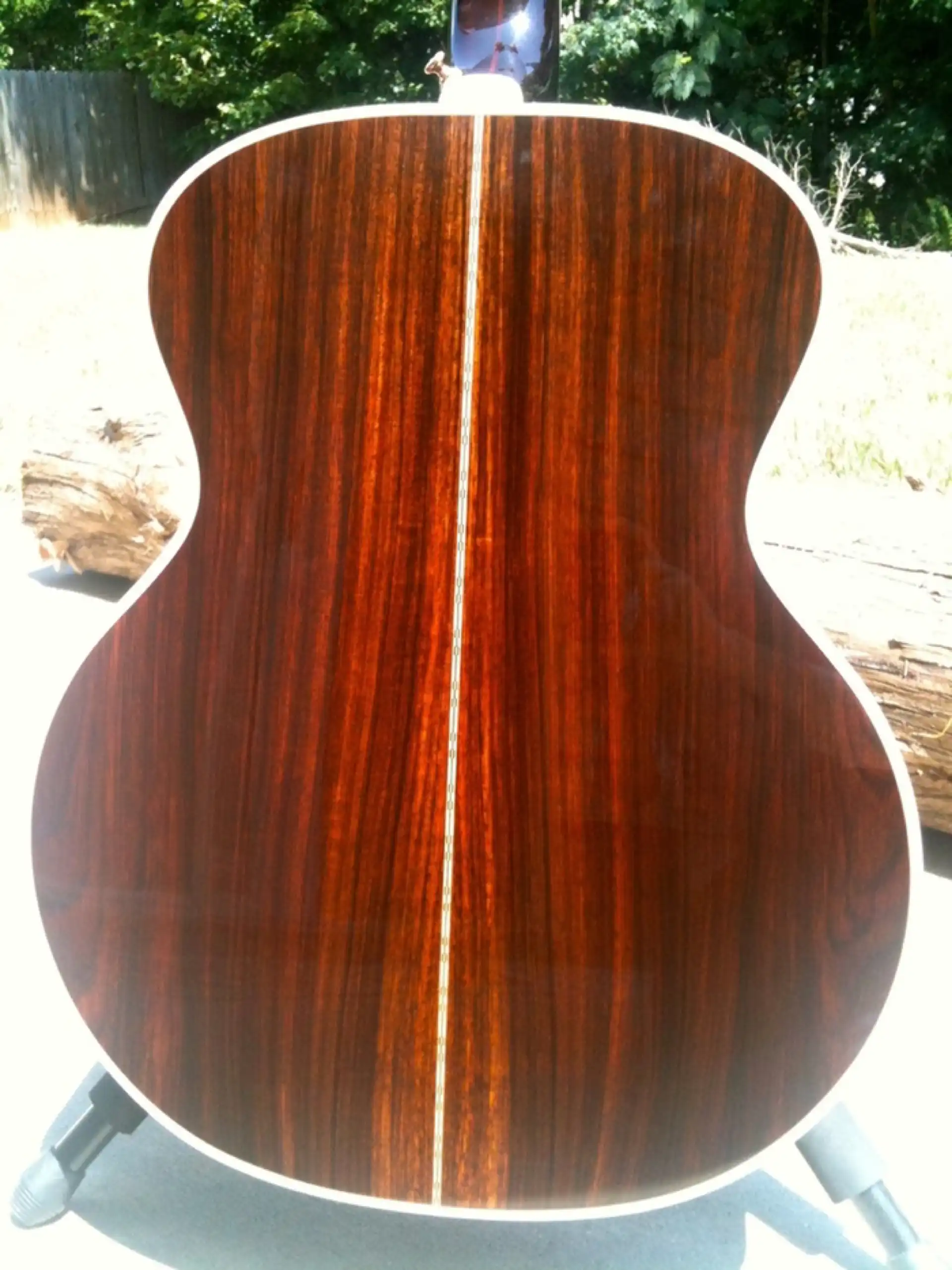
F-512 Back View
After about a year with my new 12 string, I grew dissatisfied with the fretboard, a tight 12″ radius fitted with nickel fretwire. I wanted to alter the radius to a combination of the rounder 12″ at the first fret and graduating to a flatter 20″ as I moved toward the bridge, an approach referred to as a compound radius.
I pulled the Nickel frets off and sanded in the radius. I re-fretted the guitar with EVO Gold fretwire (a super-hard material and tough on my tools, but really pretty stuff). Having now changed both the radius and fretwire, I fashioned a brand new bone nut and compensated saddle, and adjusted the action as low as I could get it for my style of playing.
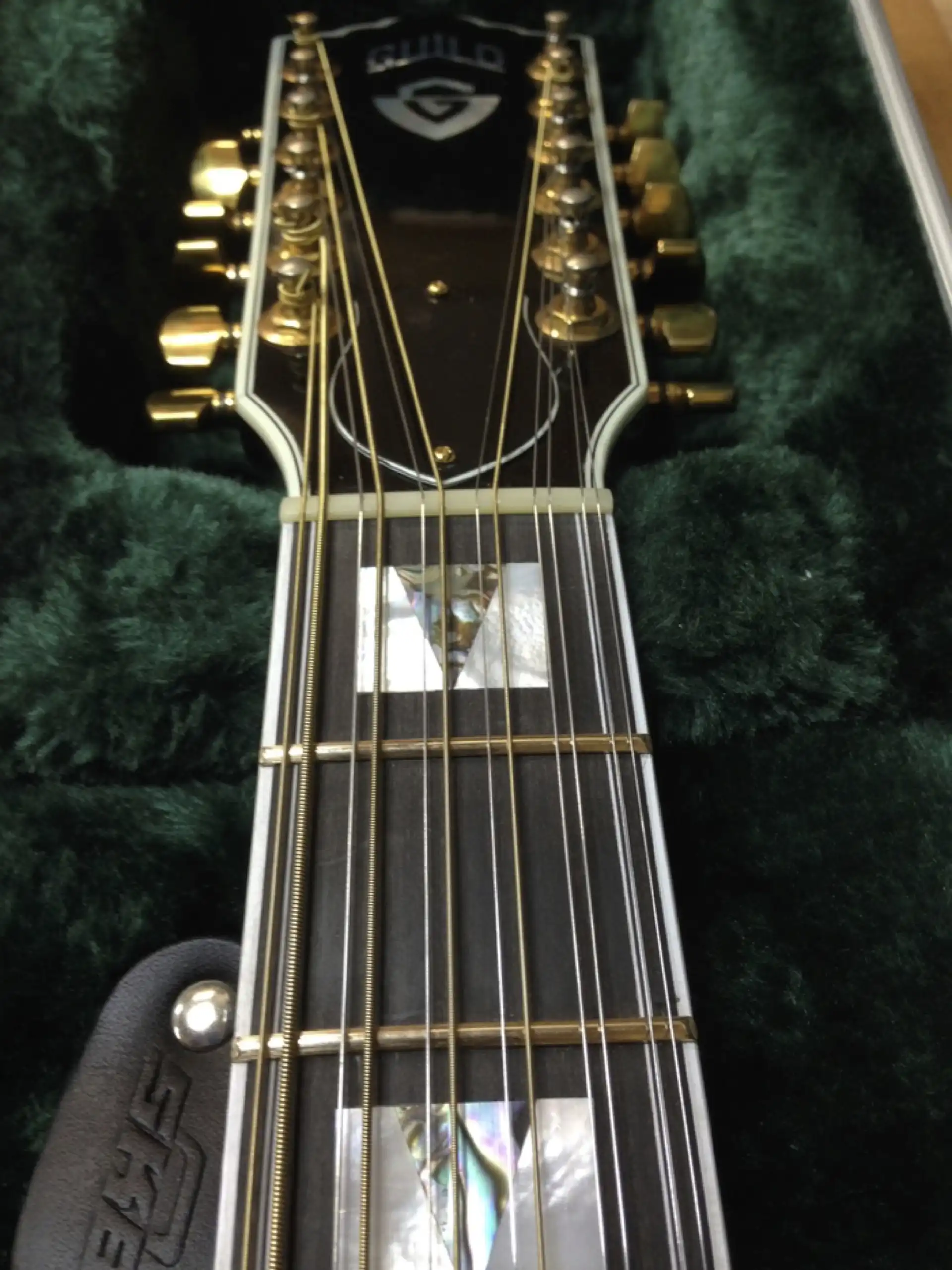
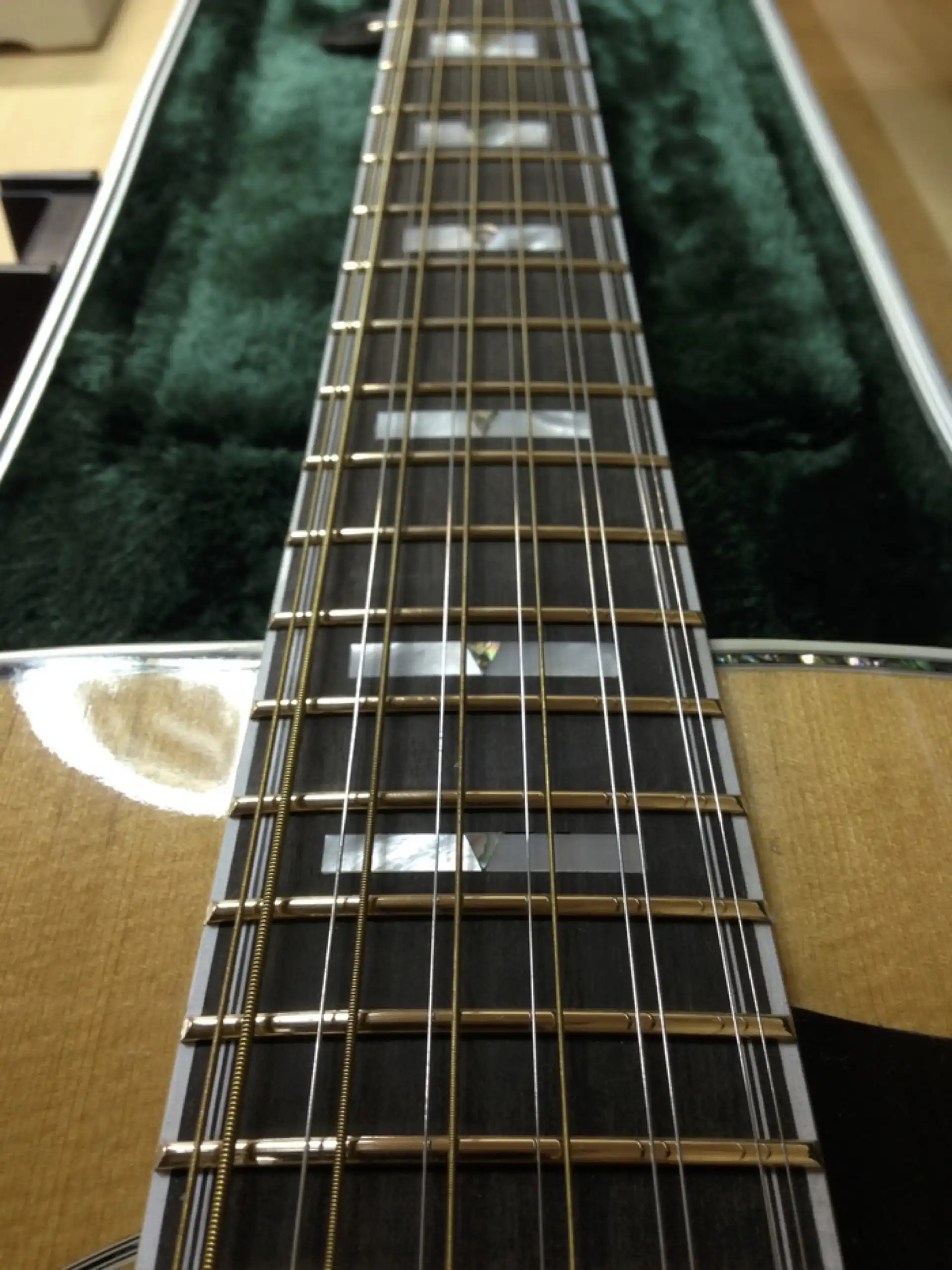
F-512 Fretboard with Gold EVO Frets
I replaced the ancient and very heavy Grover Rotomatics with Sperzel black and gold, open-back, locking tuners. The Sperzel tuners are fraction of the weight of most other locking tuners, they perform with precision, and I find them visually stunning!
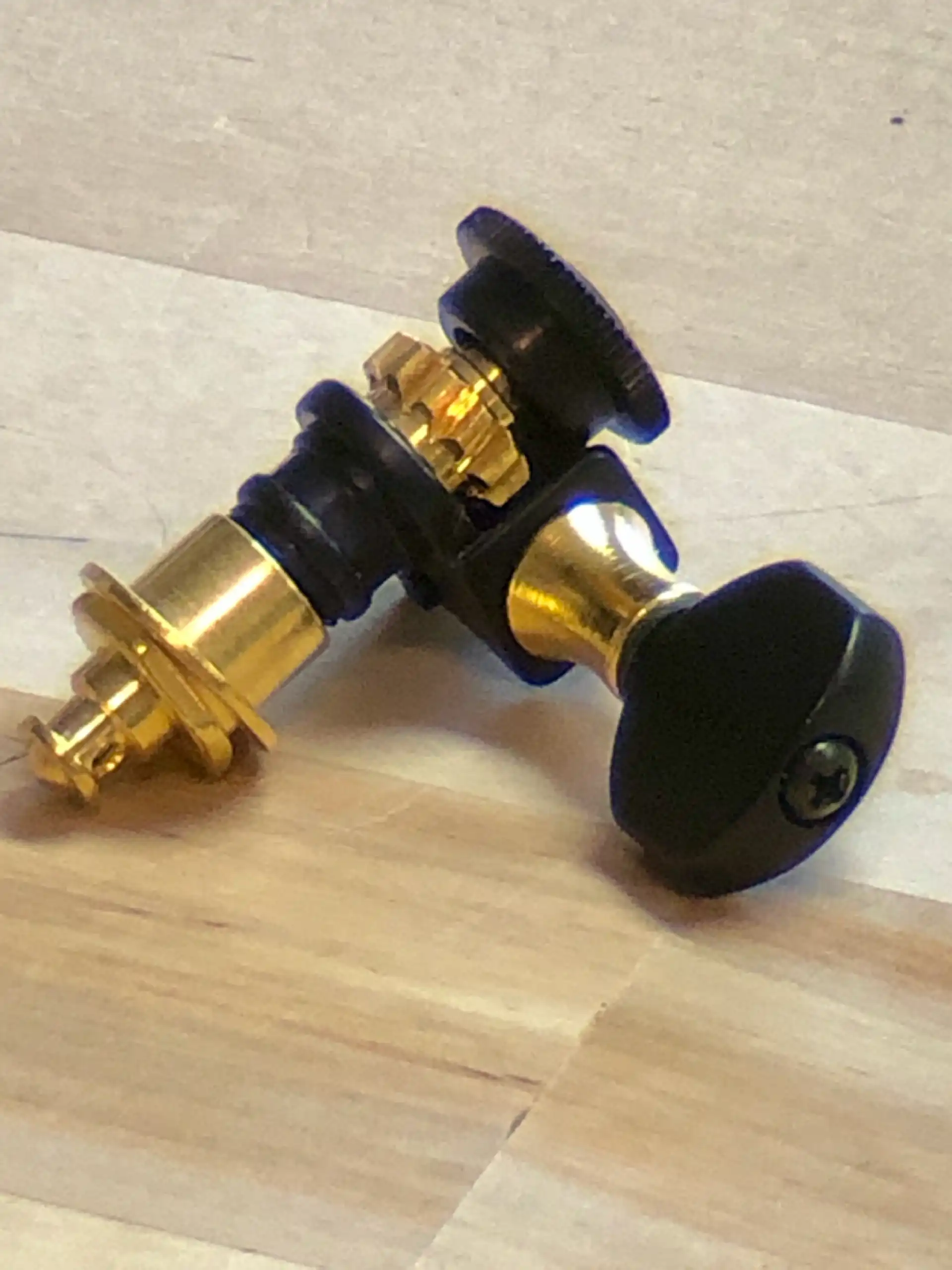
Sperzel Open-Back Locking Tuners
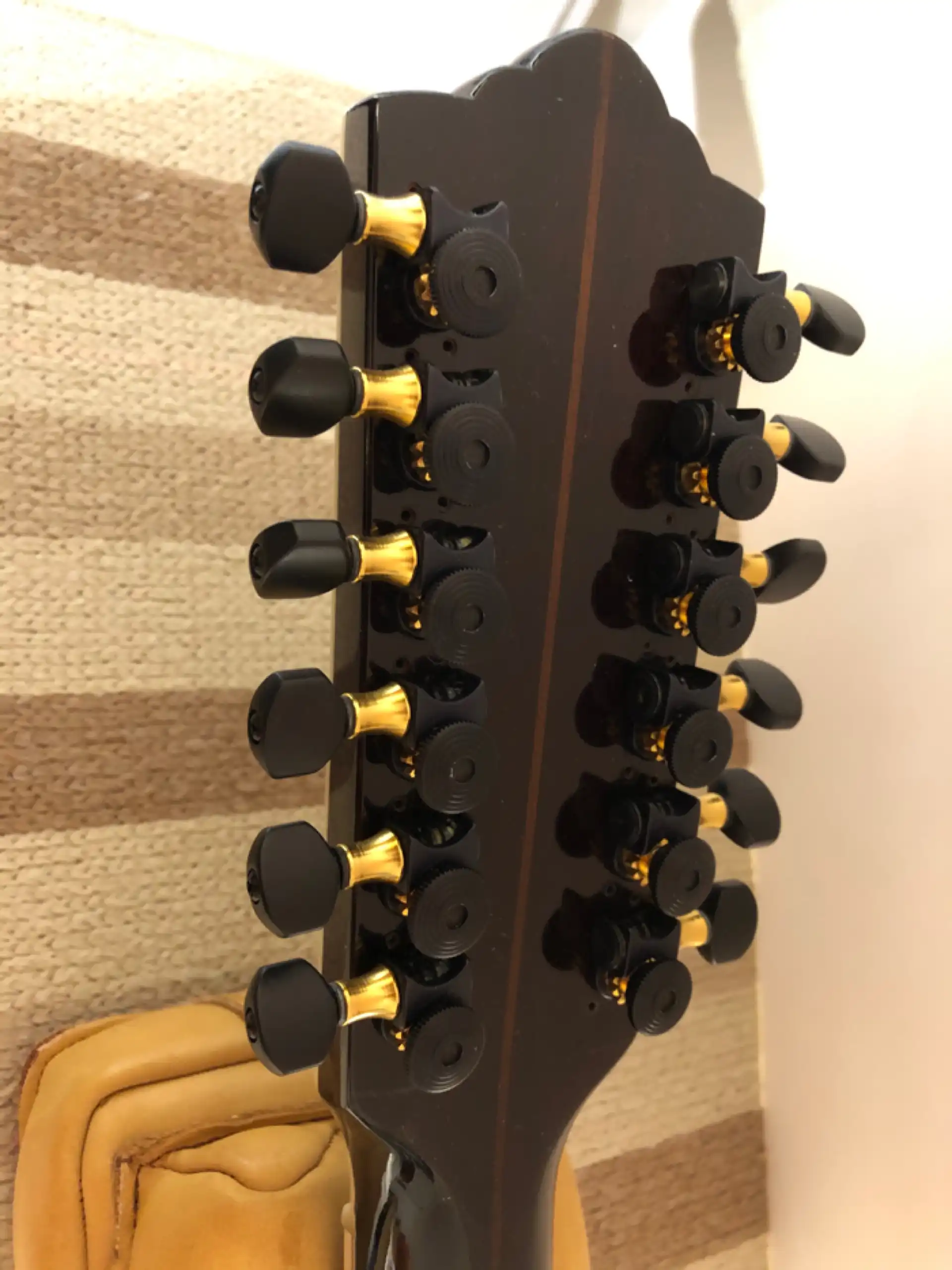
F-512 Headstock with Sperzel Tuners
You can read more about these and other tuners in my article » Tuning Machine Heads. Or visit the Sperzel site here » Sperzel Guitar Tuning Machines
Well before I started this journey, I had installed an L.R Baggs Anthem pickup which worked wonderfully with the guitar. I also had an Anthem in my Guild F-412 and Guild F-50R. I still heartily recommend the Anthem, especially for these jumbo bodied guitars. If this pickup has a "downside" it would be the warm, full, "colored" sound it produces (ironically, that is the very reason I recommend it).
I have grown to appreciate a cleaner, less-colored sound, so I replaced the LR Baggs Anthem with a James May Ultra Tonic Pickup with onboard Feedback Suppression. This is such an impressive pickup - very accurate in its response. Imagine your favorite K&K pickup, but with onboard feedback suppression and a more balanced output. I wrote an article on it, here The Ultra Tonic pickup